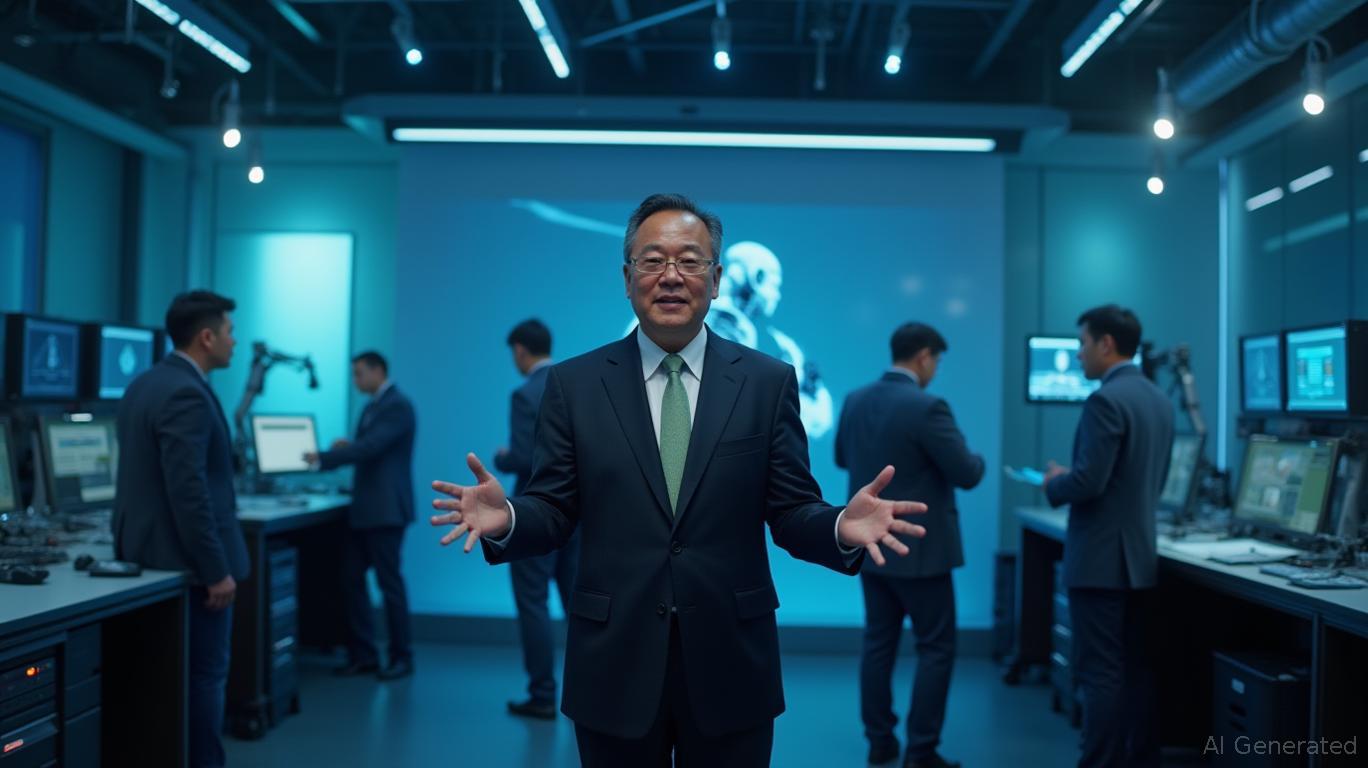Blackwell Drives AI Future as Nvidia Commands Global Tech’s Next Frontier
- Nvidia’s Q2 revenue hit $46.7B, driven by 17% sequential growth in Blackwell data center GPU sales, reinforcing its AI leadership. - Blackwell’s $41.1B data center segment outperformed expectations, fueled by hyperscaler investments and European AI cloud expansions. - China’s H20 chip restrictions limited revenue, but $650M in non-China H20 sales and 72.7% non-GAAP gross margins highlighted operational resilience. - Gaming revenue rose 14% with Blackwell-powered RTX 5060, while cloud gaming and open-sour
Nvidia’s record-breaking second-quarter performance has solidified its dominance in the AI chip market, as the company reported $46.7 billion in revenue—a 56% year-over-year increase and a 6% sequential rise—driven by robust demand for its Blackwell data center GPUs. The firm’s Blackwell Data Center revenue grew 17% sequentially, underscoring the platform’s pivotal role in the global AI race. This surge in performance reflects the broader adoption of AI infrastructure across enterprise and hyperscale clients, including key partners such as Disney , SAP , and TSMC , who are integrating Blackwell-powered solutions into their operations. The Blackwell architecture, according to CEO Jensen Huang, represents a “generational leap” in AI computing, with demand outpacing supply as production ramps up.
The second quarter’s financial results highlight Nvidia’s operational strength, with both GAAP and non-GAAP gross margins hitting 72.4% and 72.7%, respectively. Adjusted for a $180 million inventory release related to its H20 chips, non-GAAP gross margin remained at 72.3%. These figures indicate the company’s ability to maintain profitability despite headwinds, including the U.S. government’s export restrictions on H20 chips to China, which have limited revenue in recent quarters. Notably, no H20 sales to China were recorded in the second quarter. The absence of these sales, however, was partially offset by $650 million in unrestricted H20 sales to a customer outside of China, signaling that demand for older architectures remains viable in global markets.
Nvidia’s data center segment, the core of its AI-driven success, delivered $41.1 billion in second-quarter revenue, surpassing expectations for AI infrastructure and enterprise adoption. This segment has benefited from major commitments by hyperscalers such as Microsoft , Amazon , and Alphabet, who have announced multi-billion-dollar investments in cloud and AI infrastructure for the year. The company also announced strategic expansions into Europe, where it is working with several governments and industry leaders to build the first industrial AI cloud for European manufacturers. These initiatives are part of a broader effort to position Nvidia as a global leader in AI-driven transformation across sectors including manufacturing, healthcare, and automotive.
The AI boom is not limited to data centers. Nvidia’s Gaming segment reported $4.3 billion in revenue, up 14% from the prior quarter, driven by the launch of its Blackwell-powered GeForce RTX 5060 GPU. The company also announced the integration of Blackwell into GeForce NOW, significantly expanding its cloud gaming offerings. Additionally, partnerships with OpenAI and other open-source platforms have facilitated the development of localized AI models optimized for RTX hardware, reinforcing Nvidia’s ecosystem strategy and long-term market dominance in both gaming and AI inference applications.
Looking ahead, Nvidia’s outlook for the third quarter of fiscal 2026 projects $54 billion in revenue, with gross margins expected to reach 73.3% and 73.5% under GAAP and non-GAAP reporting, respectively. The company emphasized that its guidance excludes any H20 sales to China, which will remain a drag on near-term revenue until its recent deal with the Trump administration to resume sales takes full effect. Despite these constraints, analysts remain overwhelmingly bullish, with 13 out of 14 tracked analysts assigning a “Buy” rating to the stock. With a projected 80% to 90% share of the AI chip market, Nvidia is well-positioned to continue benefiting from the massive capital expenditures in AI and cloud computing announced by major tech firms in recent quarters.
Source:

Disclaimer: The content of this article solely reflects the author's opinion and does not represent the platform in any capacity. This article is not intended to serve as a reference for making investment decisions.
You may also like
The IMF warns about the global impact of dollar stablecoins

Ether Outperforms Bitcoin In ETF And Technicals

Stunning SpaceX Bitcoin Transfer: $99.8M Move Signals Major Institutional Crypto Strategy
Exposed: Bunni DEX Hacker Launders $7.3M in Stolen ETH Through Tornado Cash